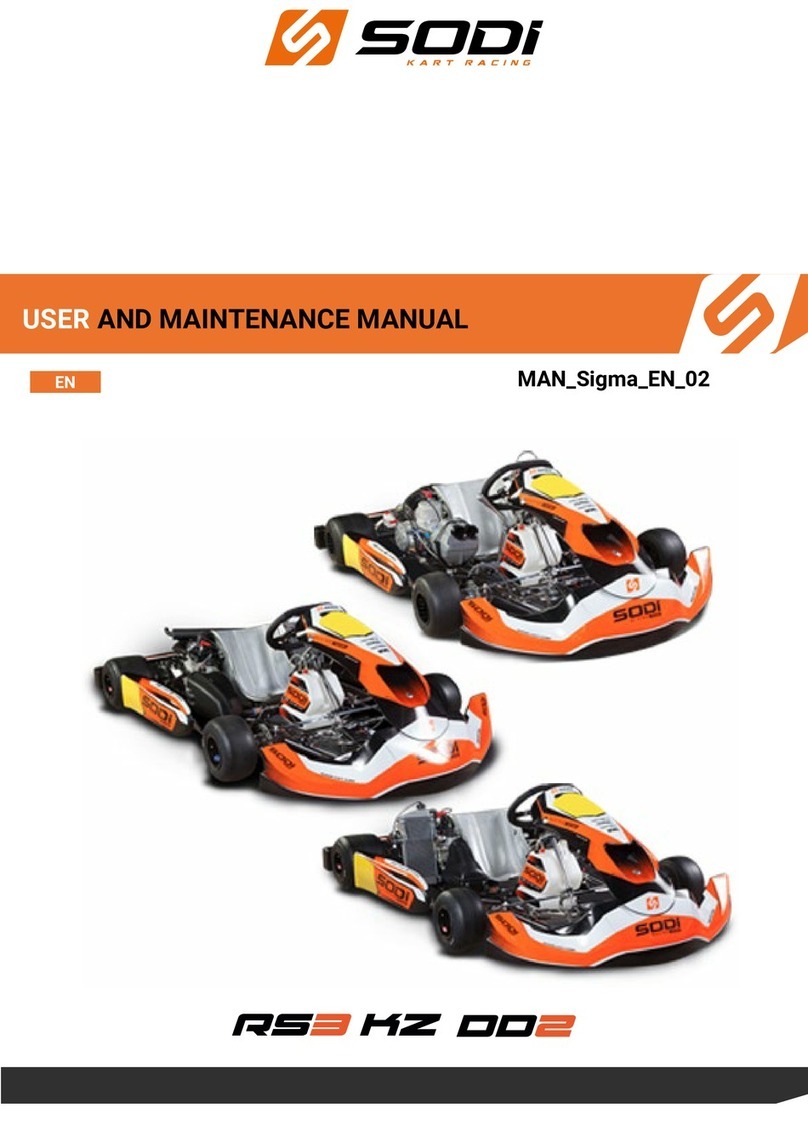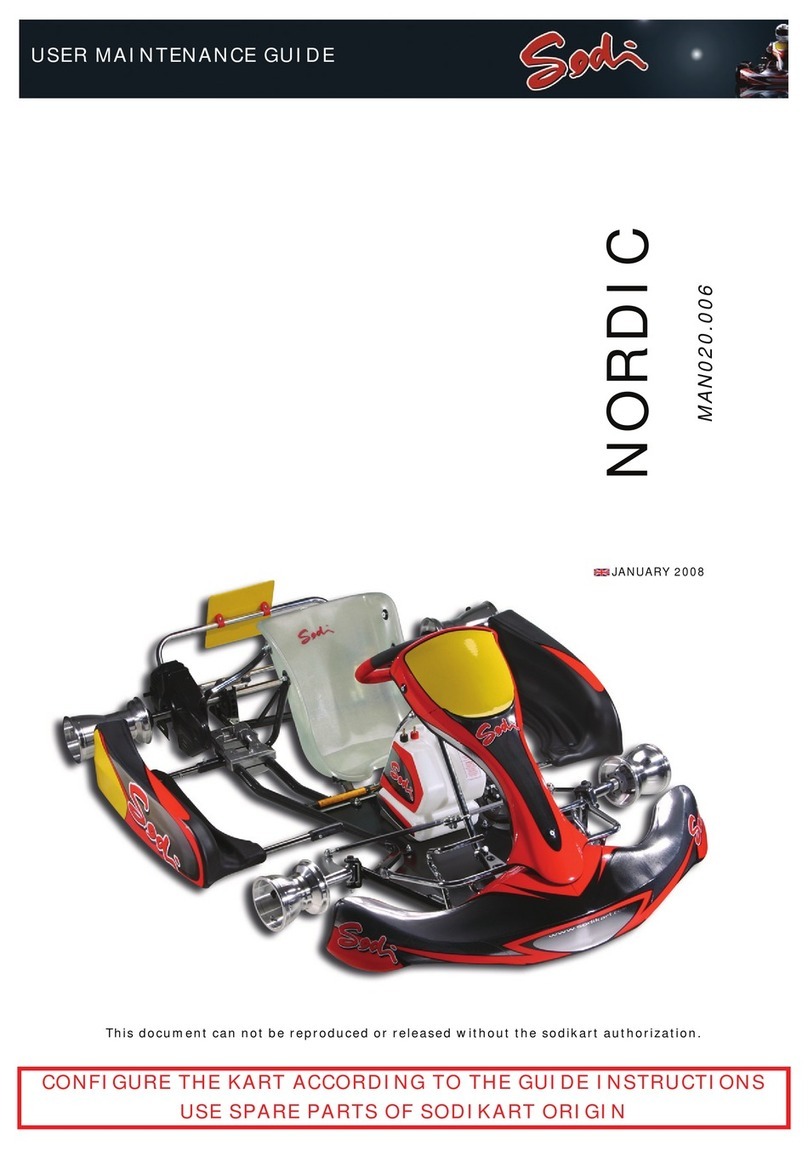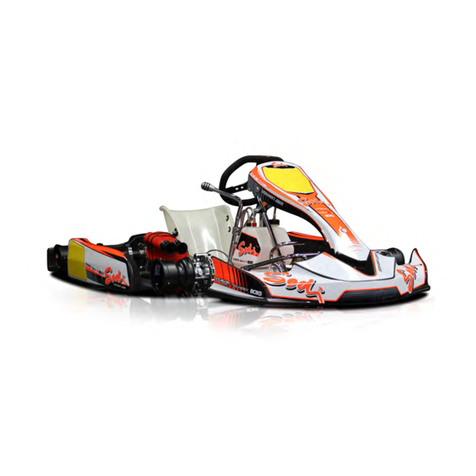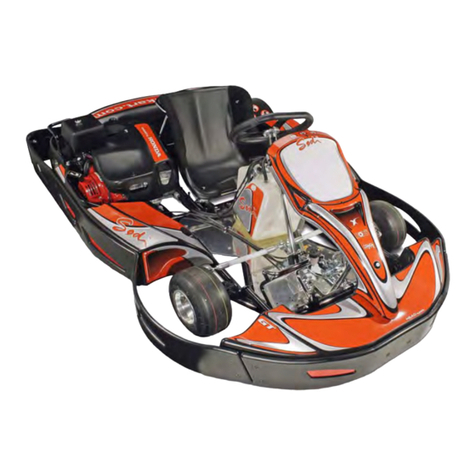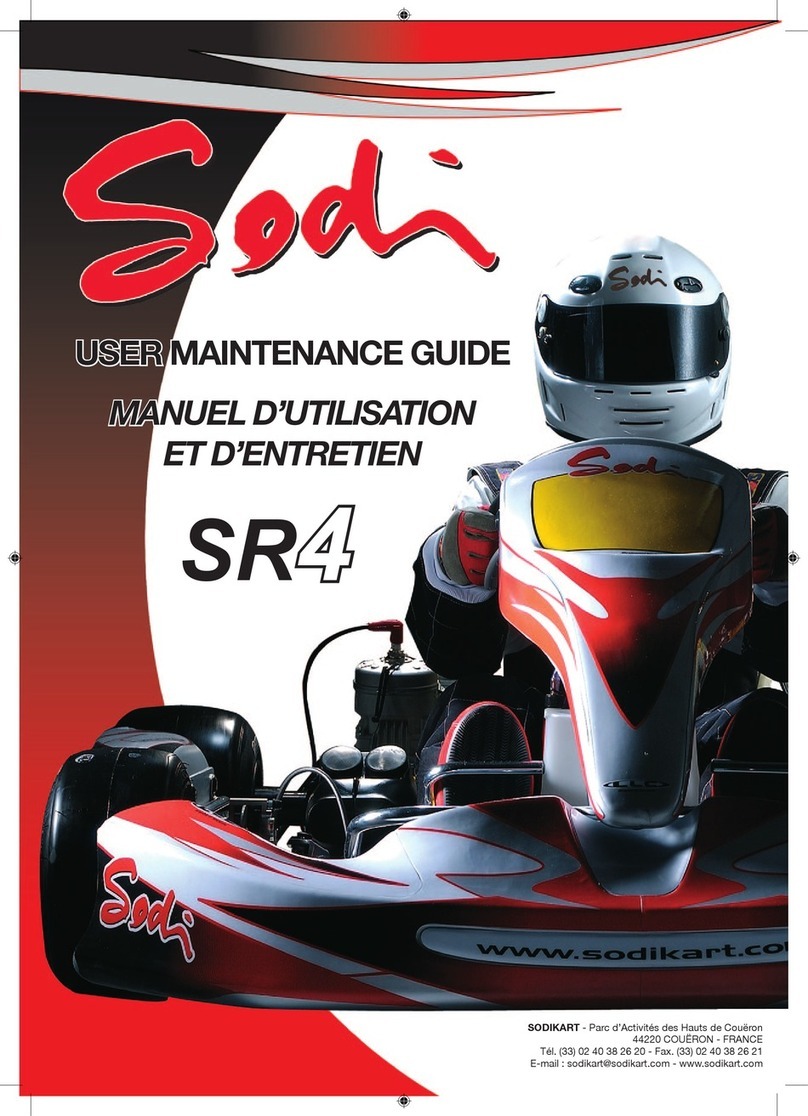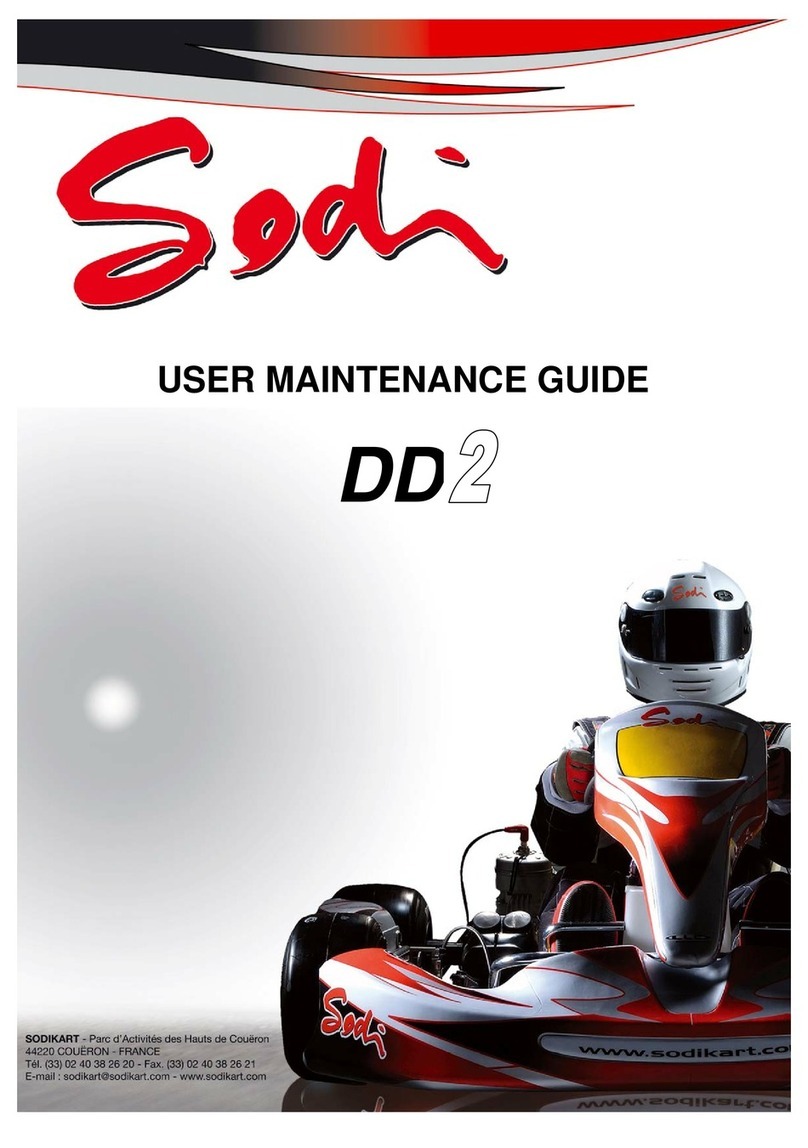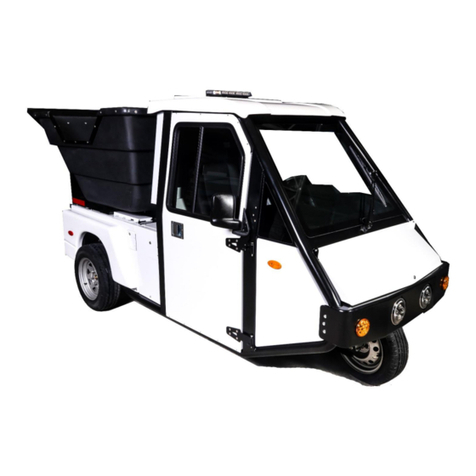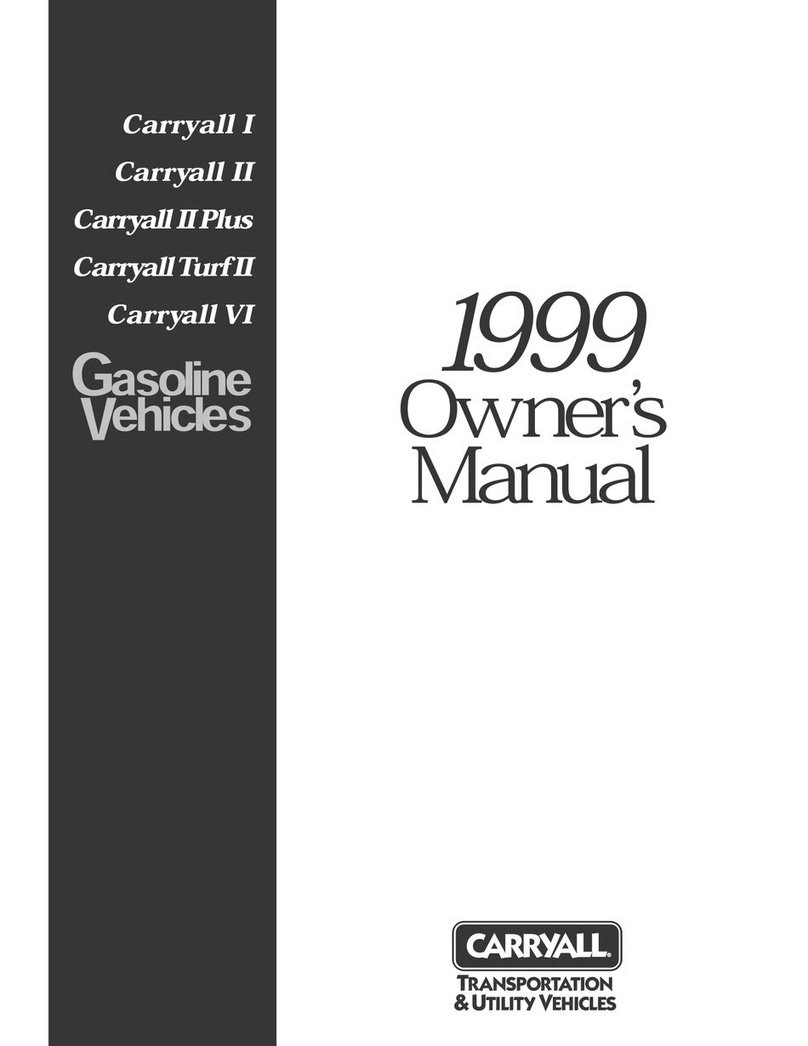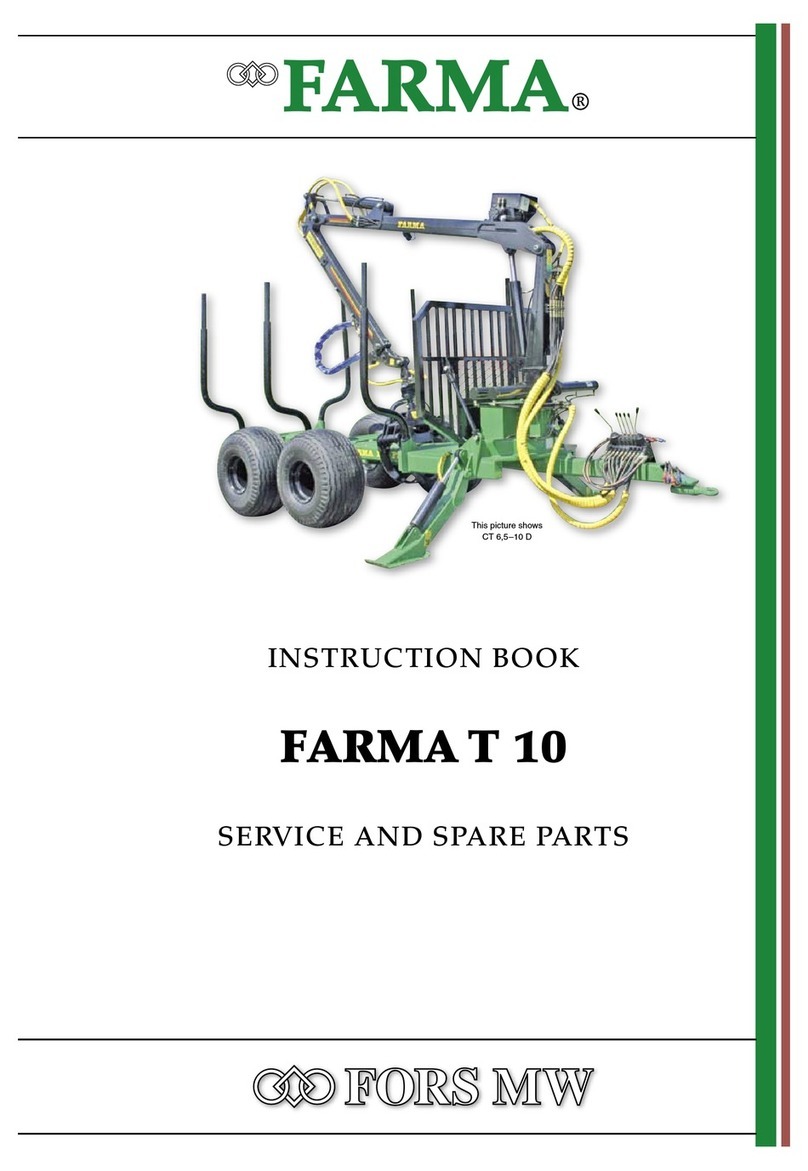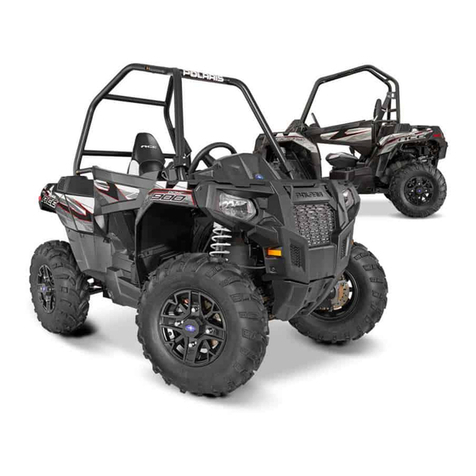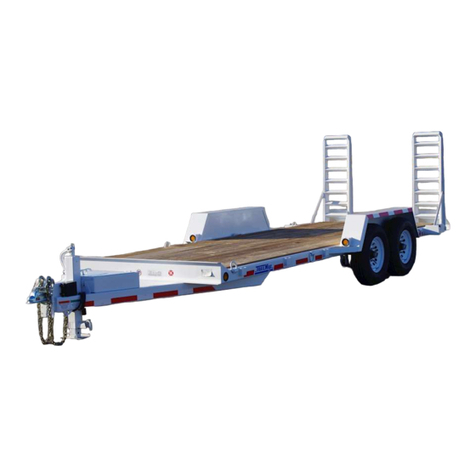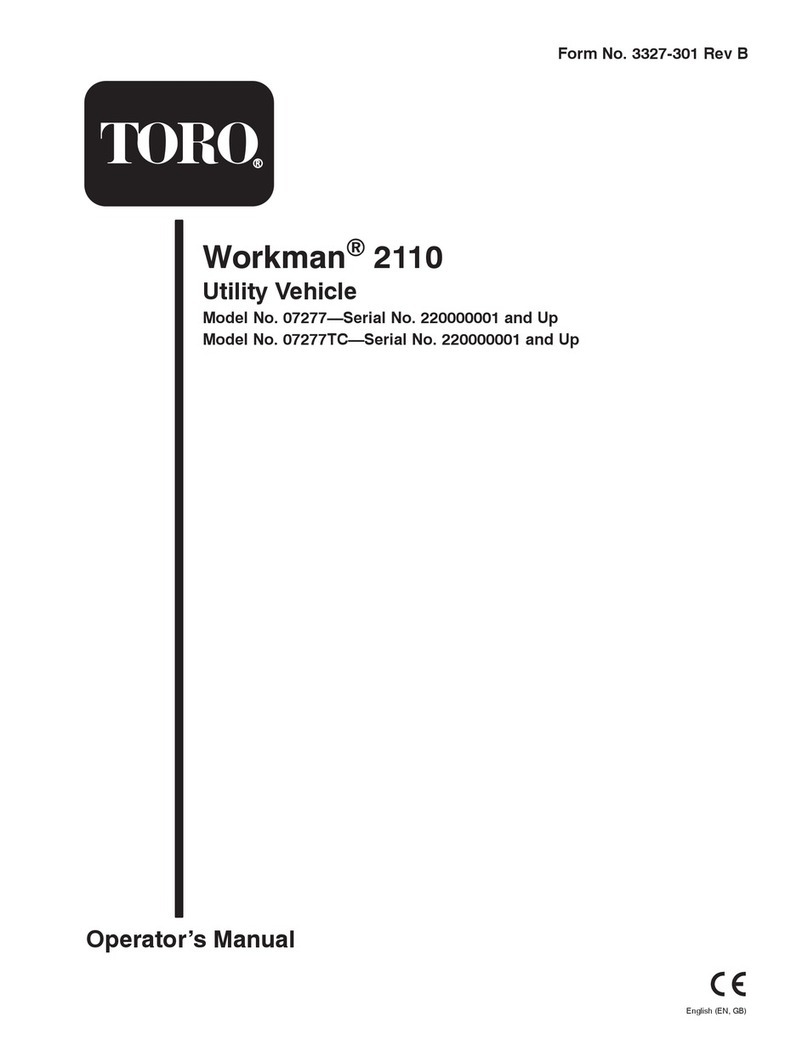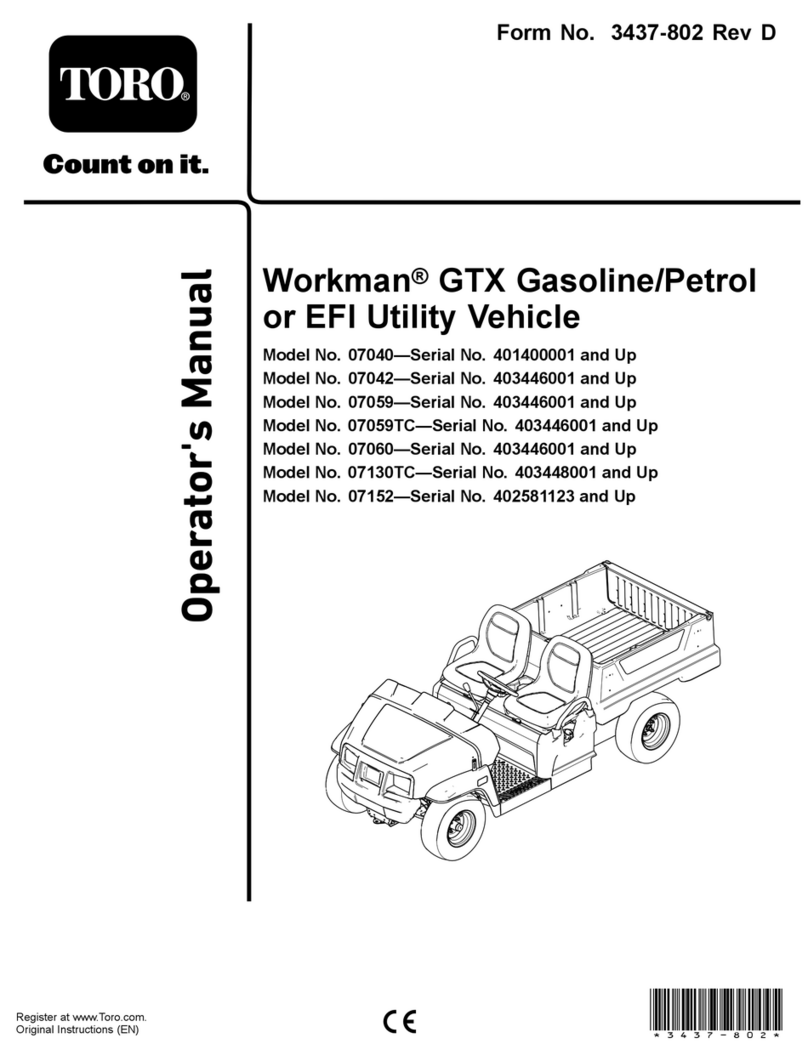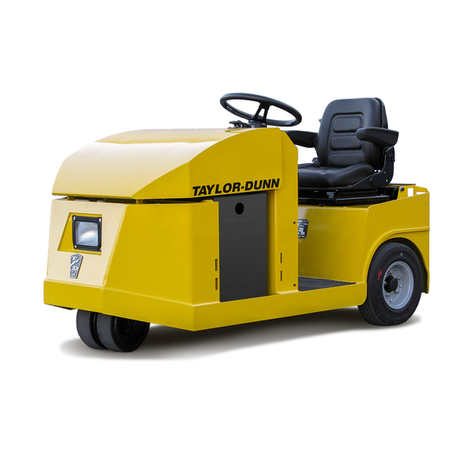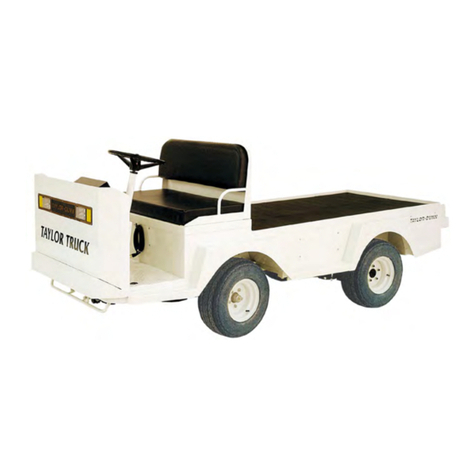
VERSION : JANUARY 2009 3/26 MAN023.012
MINIKAR
MANUAL
SAFETY INSTRUCTIONS
The MINIKART has been designed for leisure and high level competition.
Its design, which complies with the pending rules of the CIK, ensures an optimum safety in
normal working conditions.
Its high speed and performances imply a proper maintenance.
•For your safety and the one of other pilots, please thoroughly respect :
-The assembly instructions.
-The adjustment recommendations.
-The maintenance plan.
•Please pay especial attention to the instructions or comments to the following symbols
below :
NOTE:Gives useful information.
: indicates a high risk of severe injury if the instructions are not
followed.
¾Should you not find an answer to your questions in this manual or face any problem, please
get advice from the SODIKART distribution network.
¾The SODI MINIKART is designed for safety and reliability in normal conditions of use.
Before using it, please read this manual and carefully follow the instructions. By not
doing so, you might be exposed to a risk of severe, even fatal injury, and your kart
might suffer damages.
¾The SODI chassis can only be used on an approved track and by a driver who is in
possession of a valid membership card of the go-kart’s federation of his own country.
¾Prior to going on the track, please check all points related to safety.
¾In order to avoid fire, put the kart at least one meter away from the buildings. Never
leave inflammable objects close to the kart.
¾If fuel has been poured, wipe and wait for vapors to dissipate, before starting the
kart.
¾Kids and domestic animals have to be kept away from the kart and the track.
¾Never drive the kart without adequate pilot equipment.
¾Use spare parts of SODIKART origin.

